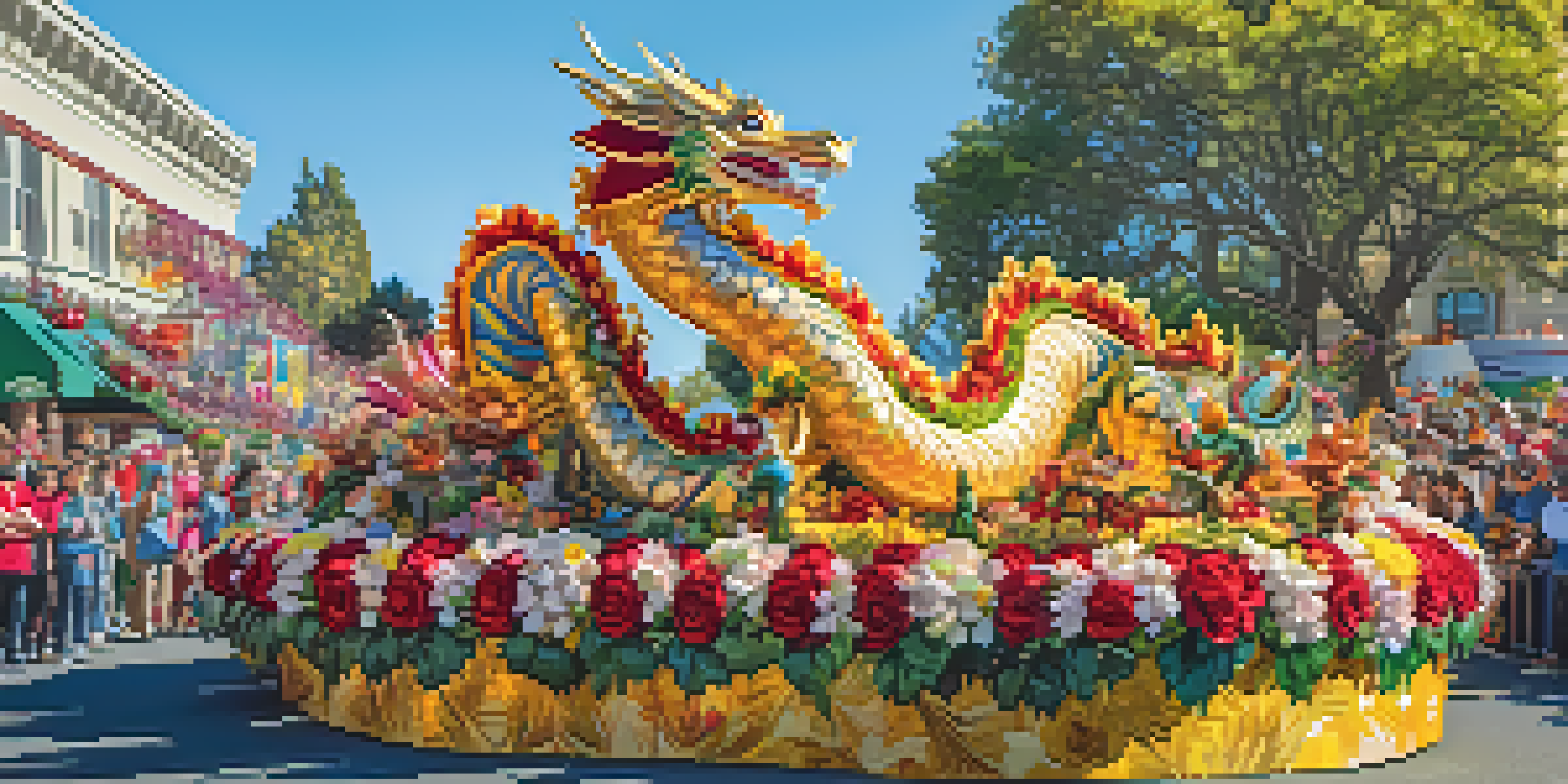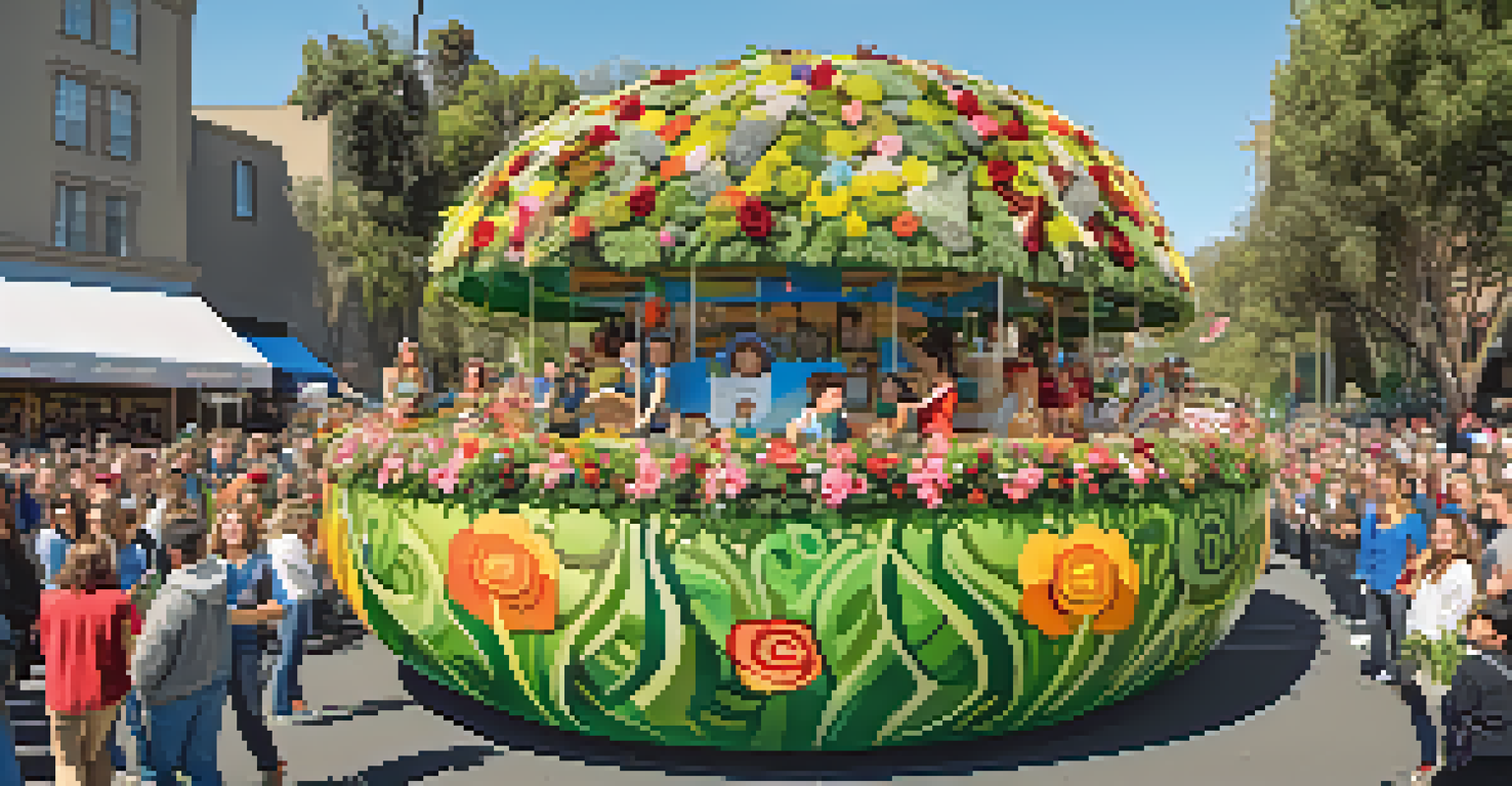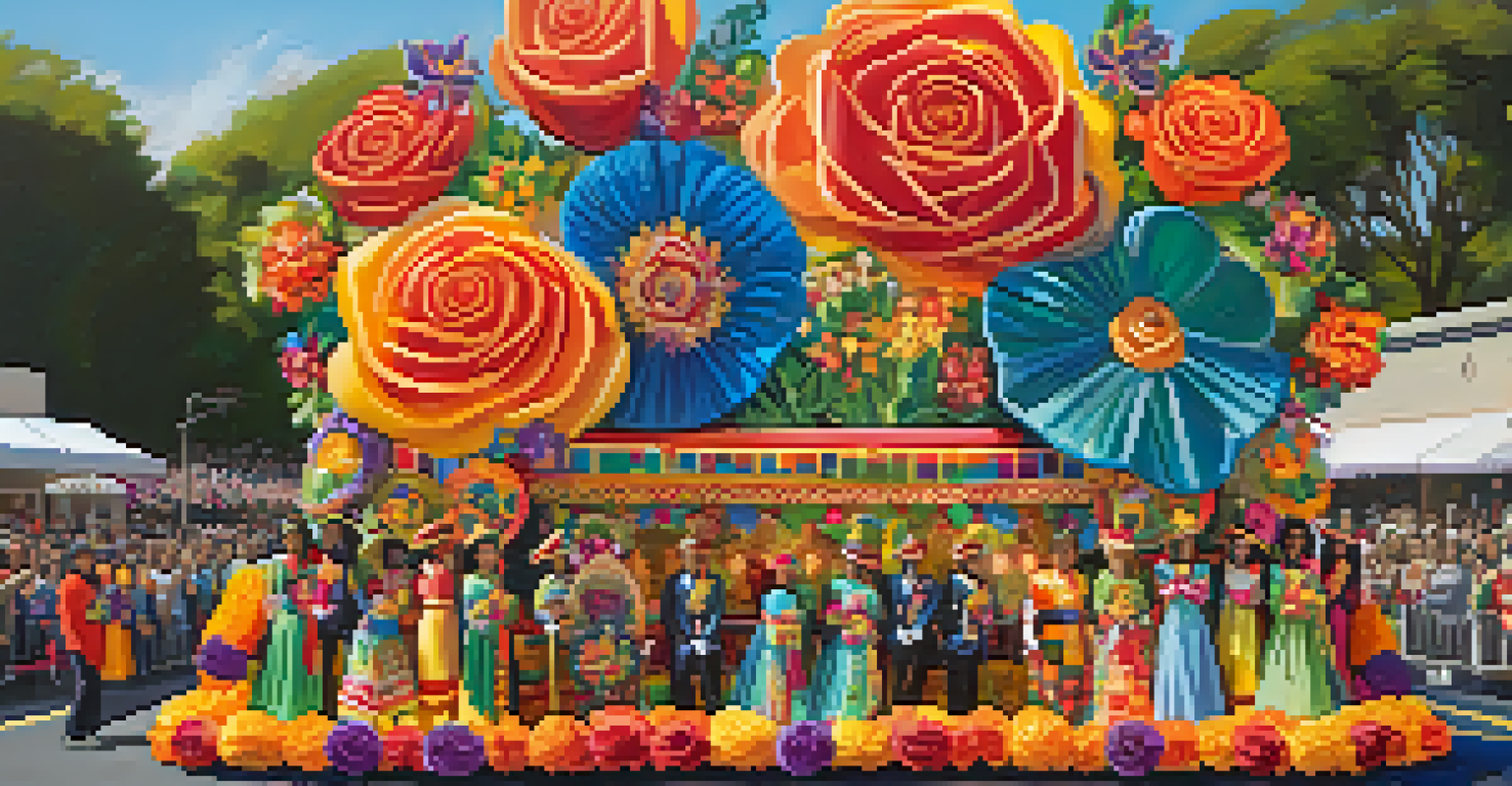The Evolution of Rose Parade Floats: From Simple to Spectacular

The Humble Beginnings of Rose Parade Floats
The Rose Parade, which began in 1890, initially featured simple horse-drawn carriages adorned with flowers. These early floats reflected the natural beauty of California's flora, showcasing local blooms in modest arrangements. Back then, the emphasis was on celebrating the arrival of spring and the region's agricultural bounty rather than on elaborate designs.
The beauty of the Rose Parade is not just in the flowers, but in the stories they tell and the community they represent.
As the decades rolled on, these floats became a symbol of community pride and creativity. The participants were mostly local residents who took great care to craft their floats, often using only materials they could find in their gardens or local markets. This grassroots approach fostered a sense of ownership and connection to the event among the townspeople.
While the floats were charming in their simplicity, they lacked the grandiosity that we associate with the Rose Parade today. This humble beginning set the stage for an evolution that would transform the parade into a dazzling display of artistry and innovation.
The Rise of Artistic Expression in Float Design
As the 20th century approached, the Rose Parade began to embrace more artistic elements in its float designs. The introduction of more sophisticated construction techniques allowed for larger and more intricate floats. Designers began experimenting with different shapes and structures, moving away from the traditional carriage style.

This period also saw the emergence of professional float builders, who brought a new level of creativity and expertise to the event. These artisans could transform a simple idea into a breathtaking floral masterpiece, using materials that ranged from flowers to seeds and even fruits. The floats became a canvas for artistic expression, showcasing themes from nature, culture, and history.
Evolution of Float Design
The Rose Parade's float designs have transformed from simple horse-drawn carriages to intricate, technologically advanced masterpieces.
With this shift, the Rose Parade began to attract attention beyond local communities. People from all over the country started to take notice of the floats, leading to increased attendance and a growing reputation for innovation and creativity in float design.
Technological Innovations Transforming Float Creation
The late 20th century brought a wave of technological advancements that revolutionized float building. With the advent of new materials and construction techniques, designers could create more elaborate and durable floats. Innovations like hydraulic lifts and motorized components allowed for dynamic movements that added flair to the presentations.
Art is the most beautiful of all lies; it is the truth of the human experience crafted with creativity.
Moreover, technology also played a role in enhancing the visual appeal of the floats. The use of lights, sound systems, and even video displays became more common, turning each float into a multi-sensory experience. These additions not only captivated audiences but also deepened the storytelling aspect of the floats.
As a result, the Rose Parade evolved into a spectacle that blended tradition with modernity. Viewers could now expect not just beautiful floral arrangements, but also engaging narratives brought to life through technology, making each float a unique story that contributed to the overall theme of the parade.
The Impact of Sponsorship and Commercialization
As the popularity of the Rose Parade soared, so did the involvement of corporate sponsors. In the 21st century, floats began to reflect the branding and marketing strategies of various companies, leading to a shift in the landscape of float design. While this commercial aspect brought in significant funding, it also sparked debates about the authenticity and artistic integrity of the parade.
Sponsorship allowed for even more elaborate designs, pushing the boundaries of what was possible. Companies could invest in cutting-edge technology and materials, creating floats that were not only visually stunning but also heavily themed around their brand messages. This commercialization led to a new kind of creativity, where marketing and artistry intertwined in ways that appealed to both audiences and businesses.
Cultural and Environmental Focus
Recent floats celebrate cultural diversity and embrace sustainability, reflecting broader societal values and environmental awareness.
However, this shift also raised questions about the spirit of the Rose Parade. Some purists worried that the focus on corporate sponsorship might overshadow the original community celebration, leading to a more homogenized experience. Balancing artistic expression with commercial interests became a key challenge for the event organizers.
Environmental Considerations in Float Design
In recent years, there has been a growing awareness of environmental sustainability in float design. As concerns about climate change and ecological footprints increase, the Rose Parade has started to implement eco-friendly practices. This includes using biodegradable materials, reducing waste, and sourcing flowers from sustainable farms.
Many float builders are now prioritizing designs that not only look beautiful but also align with environmental values. This shift has led to innovative approaches, such as using recycled materials or creating floats that promote environmental awareness. These changes reflect a broader cultural movement towards sustainability and responsibility in all areas of life.
As a result, the Rose Parade floats have begun to tell a new kind of story—one that emphasizes the importance of caring for our planet. This evolution not only enhances the beauty of the event but also engages the audience in meaningful conversations about the environment.
Cultural Themes and Representation in Float Design
The theme of the Rose Parade has evolved to embrace a wider range of cultural narratives and representations. Floats now celebrate diversity, highlighting various cultures and traditions through artistic design and storytelling. This shift reflects a greater awareness of the multicultural fabric of society and the importance of inclusion.
Float designers collaborate with diverse communities to ensure authentic representation, often incorporating traditional elements and symbols that resonate with audiences. This collaboration not only enriches the parade but also fosters a sense of belonging and pride among different cultural groups. It serves as a reminder of the beauty of diversity and the power of unity.
Commercialization's Influence
Corporate sponsorship has introduced elaborate designs and marketing elements, raising questions about the parade's original community spirit.
As a result, the Rose Parade has become a platform for cultural expression, allowing various communities to share their stories and traditions with a broader audience. This evolution adds depth to the event, transforming it into not just a celebration of flowers, but a celebration of humanity.
Looking Ahead: The Future of Rose Parade Floats
As we look to the future, the evolution of Rose Parade floats is likely to continue, with new trends and technologies shaping the designs. The integration of virtual reality and augmented reality could redefine how viewers experience the parade, offering immersive storytelling that transcends traditional viewing methods. This evolution could engage a younger audience, making the parade relevant for future generations.
Additionally, the ongoing commitment to sustainability and cultural representation will play a key role in the future of float design. As society continues to prioritize environmental and social issues, the Rose Parade will likely adapt to reflect these values, ensuring that it remains a meaningful and impactful event.

Ultimately, the evolution of Rose Parade floats speaks to the adaptability and creativity of the human spirit. Each year, as new stories unfold through floral artistry, we are reminded that this beloved tradition is not just about flowers; it's about community, culture, and the celebration of life itself.